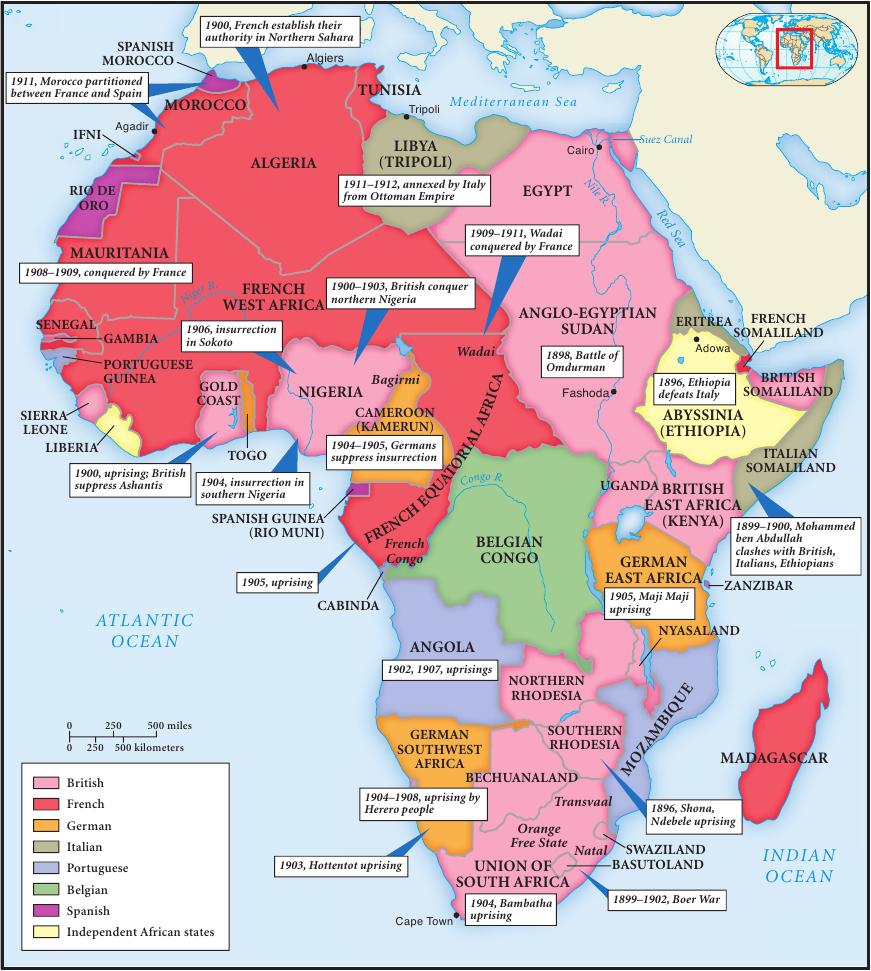The Big Picture
European Centrality and the Problem of Eurocentrism
During the century and a half between 1750 and 1914, sometimes referred to as the “long nineteenth century,” two new and related phenomena held center stage in the global history of humankind and represent the major themes of the four chapters that follow. The first of these, explored in Chapters 16 and 17, was the creation of a new kind of human society, commonly called “modern.” It emerged from the intersection of the Scientific, French, and Industrial revolutions, all of which took shape initially in Western Europe. Those societies generated many of the transformative ideas that have guided human behavior over the past several centuries: that movement toward social equality and the end of poverty was possible; that ordinary people might participate in political life; that nations might trump empires; that women could be equal to men; that slavery was no longer necessary.
The second theme of this long nineteenth century, which is addressed in Chapters 18 and 19, was the growing ability of these modern societies to exercise enormous power and influence over the rest of humankind. In some places, this occurred within growing European empires, such as those that governed India, Southeast Asia, and Africa. Elsewhere, it took place through less formal means—economic penetration, military intervention, diplomatic pressure, missionary activity—in states that remained officially independent, such as China, Japan, the Ottoman Empire, and various countries in Latin America.
Together, these two phenomena thrust Western Europe, and to a lesser extent North America, into a new and far more prominent role in world history than ever before. While various regions had experienced sprouts of modernity during the “early modern” centuries, it was in Western European societies that these novel ways of living emerged most fully. Those societies, and their North American offspring, also came to exercise a wholly unprecedented role in world affairs, as they achieved, collectively, something approaching global dominance by the early twentieth century.
But if Europeans were moving toward dominance over other peoples, they were also leading a human intervention in the natural order of unprecedented dimensions. Largely the product of industrialization, this intervention, although visible only in limited areas of the world, was nonetheless the leading edge of what would become a phenomenon of global and enduring importance. Growing numbers of scientists and other scholars now argue that humankind was then entering a new era, not only in human history but also in the history of the planet—its biological regime, its atmosphere, its climate, its geology. They have called it the Anthropocene, or the age of man.

Historically, scientists have viewed human activity as incidental to the larger processes that have shaped the physical and biological evolution of the earth. But now they are suggesting that over the past several centuries, humankind itself has become an active agent of change in this domain, rapidly reshaping the planet. While these changes became more pronounced and obvious in the second half of the twentieth century, the European moment of the long nineteenth century takes on an added significance as the starting point of an epic transformation in the relationship of humanity to the earth, equivalent perhaps to the early stages of the Agricultural Revolution. While human beings have long felt themselves vulnerable to nature, in recent centuries nature has also become increasingly vulnerable to humans.